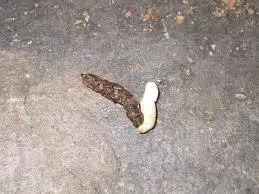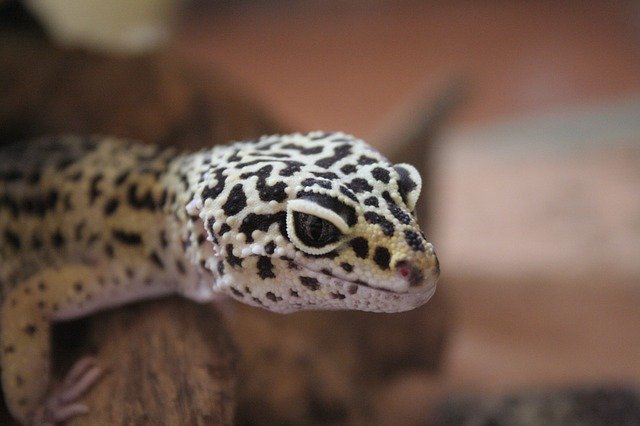If your new to leopard gecko ownership then you will more than likely have quite a few questions. One of those questions may involve leopard gecko poop.
Knowing how often it should happen, what it should look like and what to do if your gecko isn’t pooping. It may be yucky but it is important to know so that you can look after your leopard gecko.
So with that in mind this guide is going to teach you everything you would ever need to know about leopard gecko poop!
Do leopard geckos poop?
Let’s start off with the first question, Do leopard geckos poop? Yes leopard geckos poop just like most other living creatures that eat. As the saying goes what goes in must come out, keeping an eye on your geckos poop sounds disgusting but it is important so we can check our pets health.
Next up I want to talk a bit about what it should look like. I will the go onto looking about problems that could be faced and how to go about fixing it.
What does leopard gecko poop look like?
Removing bodily wastes is an important function of any living organism and leopard geckos are no different.
So what does leopard gecko poop look like? Well a leopard gecko poop is made up of three sections in a healthy gecko.
- Dark brown sausage shaped waste.
- White and yellow urates (more about these later on).
- Minimal spotting of urine or pee.
The photo below shows you what a leopard geckos poop consists of.

This is leopard gecko poop and you can see the brown waste and the white/yellow urates
How often should leopard geckos poop?
The answer to this question is very dependant on the age of the leopard gecko. Let’s have a look how often they should be pooping by age group.
Baby leopard geckos.
You should find that a healthy baby up to around 5 months old will poop 2 or even 3 times per day. This is because they are eating more as they are rapidly growing.
Juvenile.
A juvenile or young adult leopard gecko should poop once per day if it is healthy and also eating the correct amount. Every now and again this could be slightly different depending upon where it is in the shedding cycle.
Adult.
Once a leopard gecko reaches adulthood you should notice that it does not need to eat as much.
Because of this you will find that it only poops once every 1-3 days.
For more information on feeding leopard geckos the perfect diet have a look at this guide that I wrote.
A healthy leopard gecko poop.
They say that a picture paints a thousand words, so with that in mind a video must paint a million! Below is a video that shows a healthy adult leopard gecko pooping and passing urates. Notice that it is in the corner of the tank and out of the way, this is also probably its “usual place”.
https://youtu.be/urgflC6OY0g
What is the white and yellow poop in my leopard geckos tank?
I said earlier that I wanted to talk a little later in the guide about urates.
Well as it turns out that is what that dry looking white and yellow substance is that is next to your leopard geckos poop.
Urates is a bit of a mix but is mainly made up of uric acid and this comes out of your gecko as a kind of dry white or yellow pellet. If your leopard gecko is healthy the you should notice this pretty much every time it poops.
So what is the white and yellow urates substance?
Leopard geckos pee but not as you know it.
Urates are the leopard geckos way or urinating, or in other words going for a pee!
You see, leopard geckos are an arid species. They comes from hot and dry climates and as such need to keep as much water as they can.
Instead if wasting valuable water by urinating as we do the pass a solid instead and that is what the white and yellow urates are.
White poop that is not urates.
This is not as common but you may see it from time to time and if you do not know what it is you may worry.
If you find actual white poop that is not urates, so essentially there is no brown poop. This can be a sign that your leopard gecko has eaten its own shed skin.
There is no need to worry about this and it is completely natural. So if you notice actual white poop around shedding time you now know what it is.
Why is my leopard gecko not pooping?
Unfortunately there are times that you may notice your leopard gecko is not pooping as normal. This can often be the sign of a problem and that is why it is so important to keep an eye on things.
Sometimes leopard geckos can go 5-7 days without pooping and this is natural. However if you see that it has not pooped for longer than this it is time to take action.
Below are some of the main reasons that a leopard gecko may not be pooping:
- Temperature set wrong- Double check the tanks temperature, if it is too cold this will stop your gecko from being able to digest its food. I recommend getting a decent temperature and humidity sensor so like this available on Amazon. Have a look at this guide for optimum temperature and humidity set up.
- A change in environment- If you have recently cleaned out the tank and moved things around it can sometimes disrupt your leopard geckos routine. They like to poop in the same spot.
- Dehydration- If you gecko is not hydrated enough it cannot form the poop properly and will become constipated. Always make sure to offer fresh water to drink and offer moisture to feeder insects destined for gut loading.
- Impaction- This can happen when owners use sand as a substrate, it really should not be used as this is a common and dangerous problem. The sand builds up in the geckos internals and cannot be broken down of passed out in its poop.
What to do if your leopard gecko is suffering from impaction.
Impaction can be deadly to a leopard gecko so it is important to get it sorted as soon as possible if you suspect it.
To avoid the risk in the first place do not use sand as a substrate. When the gecko eats it can swallow small amounts of the sand and them over time this can build up.
If you suspect that your leopard gecko is suffering from impaction you first need to:
- Give your leopard gecko a drop of vegetable oil on its snout twice a day. Make sure to watch to see that it licks it off. If this does not work add some to a very small amount of food.
- Try to give your leopard gecko a warm bath in a small tray once a day. Keep the water around 86 f or 30 c and only up to its belly. Whilst doing this gently massage its belly, which will help to dislodge the blockage.
- Keep feeding to a bare minimum until the impaction passed through.
- If after 2-3 days it still has not passed the blockage take a visit to an approved vet who will advise and help.
Conclusion.
I hope this guide to leopard gecko poop has not been to yucky. Instead I hope you have learnt something valuable that you can take away from it to be the best gecko owner there is.
We can learn a lot about our little friends from there excrements and we owe it to them.
Carry on reading for some extra related questions!
Related questions.
Does leopard gecko poop smell? In general it does not make your room smell to bad. This is because it is so small and keeping on top of picking it out the tank will reduce the smell even more. Sometimes different insects that you feed it will make the poop smell so find what works for your gecko. If you would like to know more about if leopard geckos smell have a read about of this article I wrote.
Is leopard gecko poop toxic? Just like any living creature, leopard geckos carry pathogens in their waste. These pathogens can be toxic and could give you different health problems. As such it is always important to wash your hands as soon as you have finished handling your gecko and make sure that children do not put their hands near their mouths.
